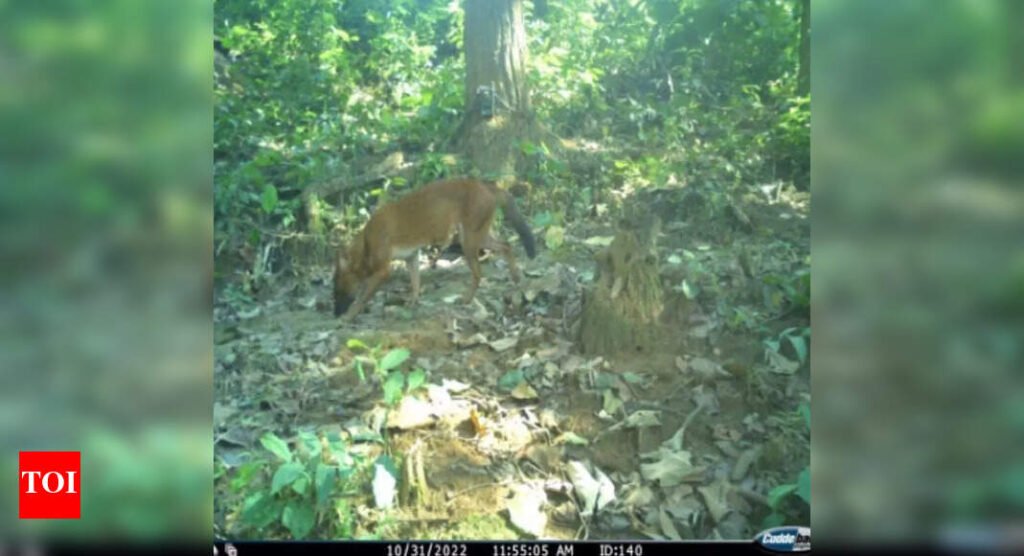Guwahati: In a rare and significant find, photographic evidence of the endangered Asiatic wild dog (Cuon alpinus) has been captured after 35 years in the Kaziranga-Karbi Anglong landscape of Assam spanning 25,000 sq km, marking a confirmed sighting of the species in the region after it was long believed to be extirpated. The discovery, published in the latest issue of the “Journal of Threatened Taxa”, is based on images recorded during a reconnaissance survey conducted from Feb 2021 to Dec 2022. A team of researchers — Mujahid Ahamad, Jyotish Ranjan Deka, Priyanka Borah, Umar Saeed, Ruchi Badola, and Syed Ainul Hussain — deployed 83 camera traps across four ecological corridors linking Kaziranga and Karbi Anglong — Panbari (92.20 sq km), Haldibari (11.24 sq km), Kanchanjuri (109.83 sq km), and Amguri (49.83 sq km). Over 15,278 camera trap days yielded the first confirmed images of the Asiatic wild dog in the region in more than three decades. “According to literature review, the last documented evidence of the species in this landscape dates back 35 years. Although small populations have persisted in areas north of the Brahmaputra — including parts of Arunachal Pradesh, Tezpur, and regions near the Myanmar and Nagaland borders — this species had vanished from the southern zones, including Kaziranga and the Karbi Anglong hills,” said lead researcher Mujahid Ahamad, a PhD scholar in Wildlife Science at the Wildlife Institute of India, Dehradun. Ahamad said these dogs which are pack hunters were believed to be extirpated due to habitat loss, rapid urbanisation and dwindling prey population, which are the ungulate. “As the availability of prey in the region declined over the years, these mammals gradually moved to other areas in search of better hunting grounds. It is important that this new information is brought into the public domain, as these animals deserve equal attention in conservation discussions. The objective of our project was to assess whether the four identified corridors —Panbari, Haldibari, Kanchanjuri, and Amguri — are still functional. If they are, we also aimed to understand where the animals are moving to and from, particularly their movement between Karbi Anglong and surrounding regions, and the sighting of this wild dog is a strong indicator of a healthy prey base in the area. If these predators are protected, it will have a healthy effect — helping safeguard the entire ecosystem and other mammal species that share the landscape,” he added.


